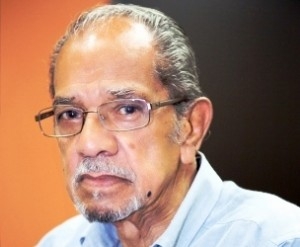
Several years ago, an awkward silence intruded an otherwise lively and informative panel discussion on the implications of the 21st century’s critical challenges for African Americans. The uneasy silence followed a question relating to the prominence of race.
(Panelists were racially mixed, left of center proponents—two former politicians, a housing development expert and a journalist. (The program was part of the Los Angeles California African American Museum series, “Conversations at CAAM.”) The silence followed the question, “How do you (the panel) account for the continuing disparity of Blacks in education, housing, jobs, etc.?” Obviously, there are no easy answers, but the panelists seemed totally stymied; given their experience and political sophistication, their silence was telling. Structural racism is the fundamental reason for the disparities, but none of the panelists suggested other reasons such as a lack of racial pride among Black Americans, ineffective Black leadership and the Black community’s failure to hold its leaders accountable.
The Black panelists’ silence was indeed telling.
Periodically, thousands of American Jews, in momentous demonstrations of ethnic pride, celebrate the Star of David flag-raising at Israeli Consulates throughout the nation. Nothing is wrong with that. However, similar expressions of racial pride by Blacks, Black Lives Matter, notwithstanding, are still widely considered politically incorrect, even unpatriotic, especially by Trump supporters. A corollary is the angst among Europeans over former colonized subjects’ unbridled racial pride after their independence. However, like other “emancipated” people, Black Americans have not totally shed conditioned inferiority. Suffice it to say Willie Lynch, Jim Crow, de jure segregation and “integration,” all served to scar Blacks’ identity and, perforce, dampen racial pride.
Los Angeles is a prime example of this malady and with the possible exception of the Black Congress (1968)- which itself was short-lived- virtually all subsequent attempts to forge sustainable unity have not been sustainable.
Hopefully, a Twenty-first Century Foundation (21CF) initiative is an exception. The foundation’s mission is to build and leverage Black philanthropy; its Men and Boys Initiative emerged from nationwide research on the challenges and problems facing Black men and boys. Initially it gave grants in New York, Chicago, Oakland and Los Angeles. The Foundation was encouraged by research that found Black men and boys reaching out to each other, Black families forming in non-traditional ways and Blacks who “made it” returning to the “hood,” sharing their experiences and strengthened by those who never left.
Underscoring the need for the initiative were sobering, if predictable findings: Blacks made up 12% of the country’s population, yet comprised 50% of those incarcerated; 42% of Black boys failed an entire school year at least once. As the nation shifted to lower-paying jobs, Black men and boys were severely impacted; over three-fourths of these jobs were held by Blacks and Latinos; for Black males, the suicide rate (15-59) increased 140% and for the ages 10-14, 233%; 60% of non-custodial fathers who failed to pay child support were uneducated and unskilled.
As mentioned, the Men and Boys Initiative was created after identifying, publicizing and supporting programs that transform the lives of individual Black men and boys and pursuing strategies that challenge the devaluation of those lives and attack the roots of the crisis.
The foundation made grants to organizations that positively impact men and boys’ lives on a daily basis—raising high school graduation rates, lowering recidivism and bringing non-custodial father back into their children’s lives.
The 21CF convened a series of forums in the four initial focus cities that identified the following urgent needs: Education—in many urban areas, more than half of Black students drop out of high school. At the other end of the spectrum, Black men earn advanced degrees at only half the rate of white men. Employment and Economic Sustainability: In every age group, Black male unemployment was double that of white males; one out of four Blacks lived below the poverty line and the median worth of all Black Americans was one-tenth that of whites.
Criminal Justice: One out of three Black males will be incarcerated at some point in their lives, compared to 4 out of 100 white males; Black men are arrested more frequently and serve longer average sentences than white men for every crime. Engaged Fatherhood: Black men face barriers to engaged fatherhood disparately that include poverty (3.4 million non-custodial fathers lived at 200% below the poverty line); unemployment, imprisonment and lack of strong male models. Health: At birth, Black men have 5 years less life expectancy and are twice as likely to die during middle age. The prevalence of HIV-AIDS among Black men and boys was 8 times greater than for their white counterparts. Nonetheless, the Foundation contends a strategic approach built on coordination, sharing of best practices and innovative grant-making yields promising results.
The Men and Boys Initiative was a start. However, its chief value was its decision to unapologetically focus on Black men and boys, and have other philanthropic organizations follow suit. Hopefully, there has been explicit recognition that racial pride is foundational for forging the collective (internal) and collaborative (external) unity needed for its success. However, at least in Los Angeles, there is no public report of the current status of 21st Century Foundation’s Men and Boys Initiative. Further inquiry- and transparency by 21CF- is necessary to support the original intent of that critically important effort.







